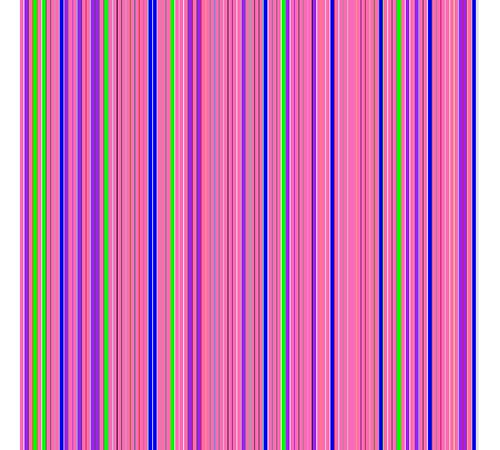R and ggplot2 barcode of Firefox questions using no for loop just map functions, gain is questionable :-) but worth it in the long run, learned lots from learn to purrr
-
(please refer to my previous post: R and ggplot2 barcode of Firefox questions using a for loop; functional version in next post)
-
Was it worth it? Is code without
forloops better? -
My answer is no, not for short programs but in the large probably! I learned a lot from Rebecca Barter’s Learn to purrr from 2018 in the process! such as:
-
1. The tilde-dot shorthand for functions will come handy in the future! Like ruby blocks, it is more compact to use this for simple functions instead having to write out a function and decide on a parameter name instead of just using
.x
~{colours_array[(abs(digest::digest2int(.x)) %% 657) + 1]})
-
2. map functions like
map_chr()can’t be passed in a whole data frame; they need to be passed a specific column. -
Here’s the actual code from no-for-loop-ff-question-barcode.R without the “kludgy”
forloop:
library(tidyverse)
colours_array <- colours()
getOSColour <- function(.x) {
os_colour <- "purple"
macos_str <- "mac-os|os-x|osx|macos"
windows_str <- "windows-7|windows-8|windows-10"
linux_str <- "linux|ubuntu|redhat|debian"
if(str_detect(.x, macos_str)) os_colour <- "blue"
if(str_detect(.x, linux_str)) os_colour <- "green"
if(str_detect(.x, windows_str)) os_colour <- "hotpink"
return(os_colour)
}
csv <- read.csv("https://raw.githubusercontent.com/rtanglao/rt-kits-api3/main/2020/2020-10-20-2020-10-20-firefox-creator-answers-desktop-all-locales.csv")
# see https://stackoverflow.com/questions/39975317/how-to-reverse-the-order-of-a-dataframe-in-r
reverse_csv <- csv %>% map_df(rev)
length <- nrow(reverse_csv)
xintercept <- seq.int(by = 10, length = length * 2, from = 0)
size <- rep(c(4,2), length = length * 2)
reverse_csv_with_title_plus_content <- reverse_csv %>%
mutate(tplusc = paste(title, content))
os_colours_vector <- map_chr(reverse_csv$tags, getOSColour)
question_colours_vector <- map_chr(reverse_csv_with_title_plus_content$tplusc,
~{colours_array[(abs(digest::digest2int(.x)) %% 657) + 1]})
colours_vector <- c(rbind(os_colours_vector, question_colours_vector))
p <- ggplot() + theme_void()
p <- p + geom_vline(col = colours_vector,
xintercept = xintercept, size = size)
Output
Here’s the output (which is the same as the for loop output of course!)
